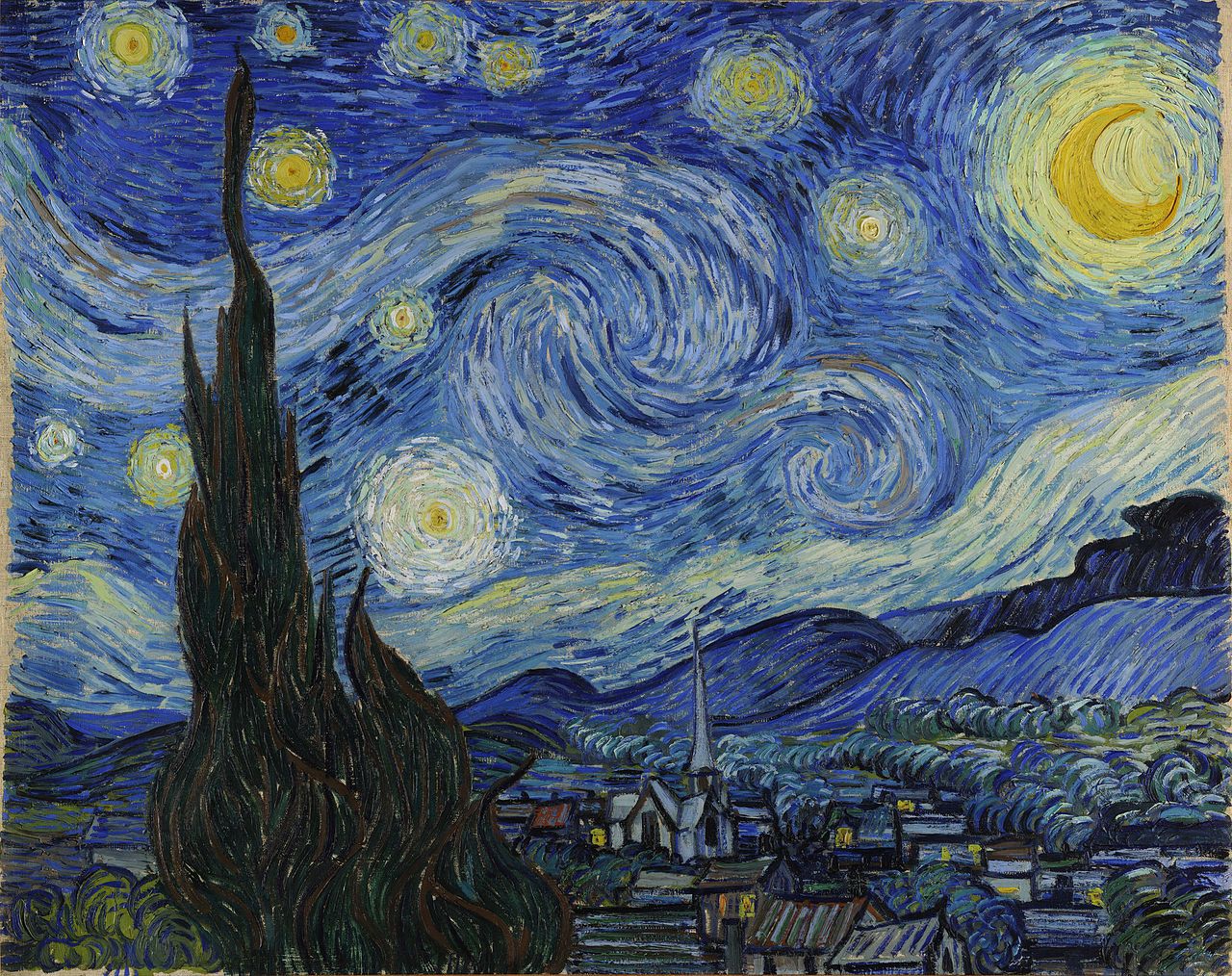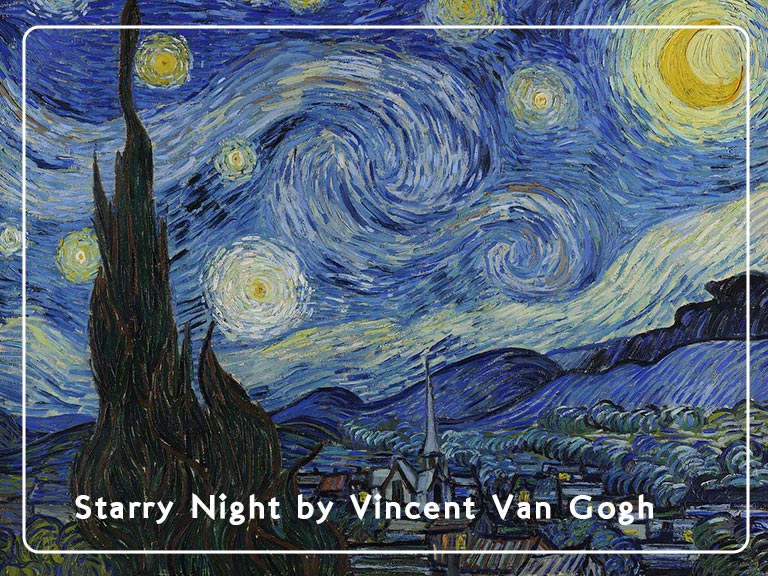Vincent van Gogh’s Starry Night is a famous oil painting that he completed in 1889. The painting depicts a night sky filled with swirling stars above a village. The work is considered one of Van Gogh’s most iconic pieces and is known for its vivid use of color and texture.
Van Gogh painted Starry Night during his stay at the Saint-Paul-de-Mausole asylum in Saint-Rémy-de-Provence, France, where he admitted himself voluntarily in 1889. The painting was created from memory, and Van Gogh used his imagination to create a dreamlike landscape with swirling stars and a dramatic moon.
Van Gogh’s technique in this painting was to apply thick impasto layers of paint to create a highly textured surface. He used a limited palette of colors, including blues, greens, and yellows, to create a sense of depth and movement. He painted the night sky with a swirling pattern to create a dynamic sense of movement, and used contrasting colors and shapes to create a sense of tension and drama.
Van Gogh used oil paint on canvas to create Starry Night, which is a traditional medium for painting. He also used his fingers, brushes, and palette knives to apply the paint, creating a range of textures and effects. The thick layers of paint give the painting a sculptural quality and create a sense of movement in the sky.
At the time he painted Starry Night, Van Gogh was struggling with mental illness and emotional distress. However, he found solace in his art, and this painting reflects his emotional state at the time. The swirling sky and vivid colors represent Van Gogh’s attempt to capture the intense beauty of the natural world and his own emotional turmoil.
Starry Night is part of the permanent collection at the Museum of Modern Art (MoMA) in New York City, USA. It is one of the most popular works in the museum’s collection, and visitors can view it in person when visiting the museum.
Janna Levin (in the video above) is a physicist and writer who has given a TED talk and participated in several YouTube videos on the topic of Vincent van Gogh’s Starry Night.
Janna Levin explores the connection between Van Gogh’s painting and the scientific understanding of the stars and the night sky. Levin discusses how Van Gogh’s portrayal of the stars was not scientifically accurate, but rather reflected his emotional response to the night sky. Levin also explores the cultural and historical context of the painting, as well as the science of the stars themselves.
Throughout the video, Levin provides a scientific perspective on the painting while also acknowledging the emotional impact and cultural significance of Starry Night. She argues that art and science can both provide unique ways of understanding the world around us, and that Starry Night represents a powerful example of the intersection of these two disciplines.
Overall, Levin’s video offers a fascinating exploration of the connections between art, science, and culture, and provides a deeper understanding of the significance of Vincent van Gogh’s Starry Night. We hope you enjoy watching it.
In conclusion, Vincent van Gogh’s Starry Night is a masterpiece that continues to capture the imagination of art lovers around the world. The painting was created using oil paint on canvas, and Van Gogh used his unique technique to create a highly textured and dynamic surface. The painting reflects Van Gogh’s emotional state at the time, and the swirling night sky and vivid colours continue to inspire and captivate viewers today.

If you would like to receive a roundup of all of our blog posts once a week to keep you inspired in your inbox, why not sign up to our newsletter. You can access our sign up at the top of our page. If you are a London Art College student and you would like your artwork featured here, drop us a line at any time.

